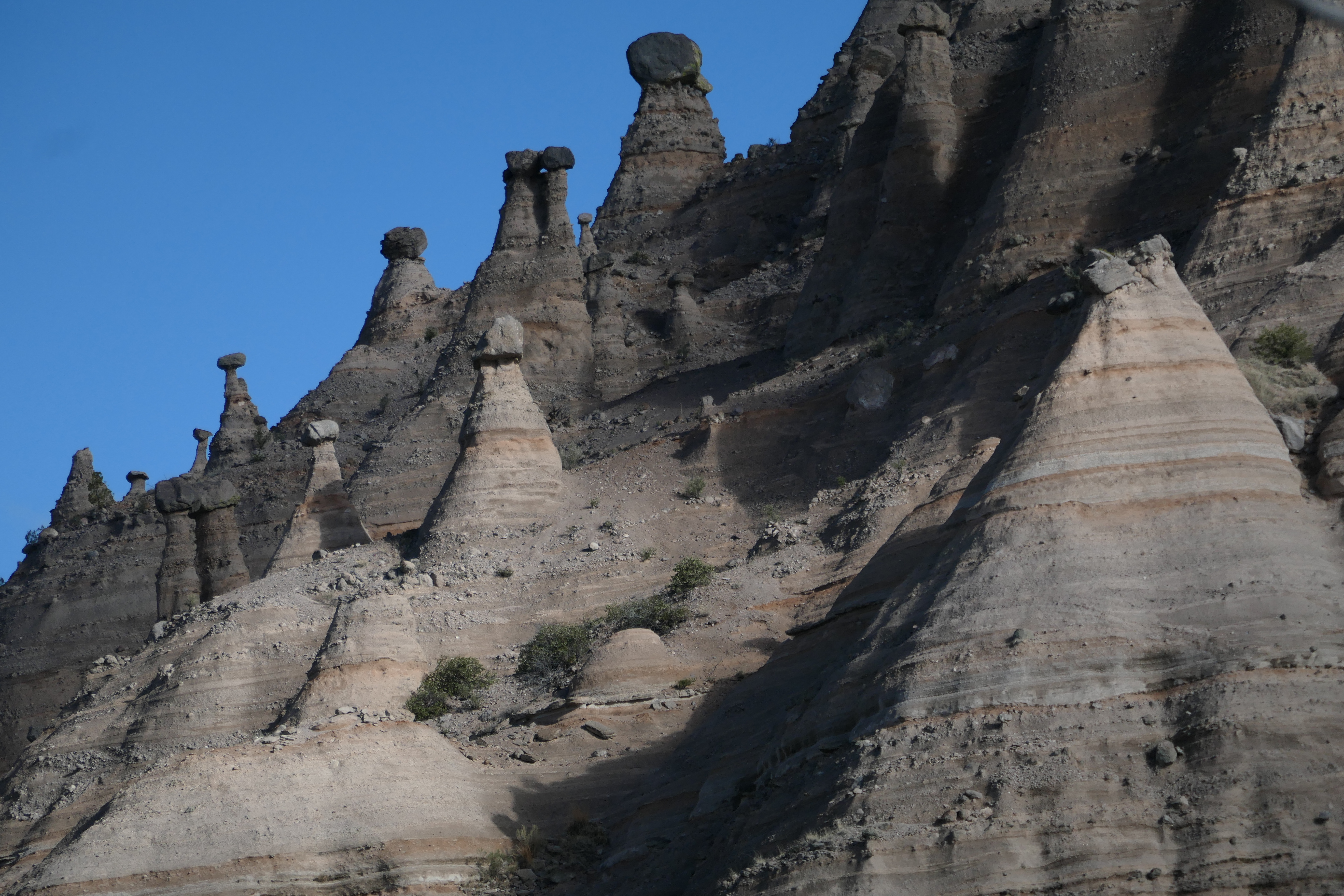The first humans to come to what we now call the United States got here on foot. They crossed the Bering Land Bridge from Asia some 20.000 years ago, perhaps even 30.000 – 40.000 years ago. They made their way up and down the coast by boats, nomadic tribes often driven to new places by changes in climate. Scarcity of food led to various intertribal fighting for resources, a culture fostering warriors, but also to tribal migration to climes where they could eventually settle.

The North American Indian people who live in permanent compact settlements in New Mexico are known as Pueblos, descending from the pre-historic Ancestral Pueblo people (Anasazi). The eastern Pueblo villages are in New Mexico along the Rio Grande and comprise groups who speak Tanoan and Keresan languages, comprised of Tiwa, Town and Tewa, as well as Athabaskan.


At the time the Spanish conquistadors arrived in 1539, the Pueblos had autonomously governed villages, where decisions were made in subterranean ceremonial chambers called Kivas. Hunting and gathering was supplanted by farming of corn, squash and cotton – the only crops available. Complex irrigation ditches were constructed and lined with clay to preserve water (the latter giving archeologists a leg up in mapping the water systems.) Plant plots were sheltered with gravel to prevent evaporation. Societies were matrilineal (inheritance went down the female line) and matrilocal (boys married into the villages of the girls.)


Hunting was communal, including the hunt for rabbits – up to 60 people at a time would cut their hair and weave it into hare-nets, enormously long structures that snared the bunnies, some persevered from 11.000 BC in the museum where I learned all the rest of it: the MUSEUM OF INDIAN ARTS AND CULTURE in Santa Fe.

I had gone there to explore their exhibit Beyond Standing Rock which highlights encroachments and violations of Native American sovereignty, many of which have impacted Native health and sacred lands and describes what led up to the DAPL protests. http://miaclab.org/current&eventID=4044

As luck would have it, I was invited to a practically private 2 hour tour of the museum with an incredibly knowledgeable docent, who taught about the archeological finds, but also the bloody history the Pueblo people had to endure. Although they managed, after 90 years of Spanish colonization, to unite in rebellion and reclaim their land and independence (as well as the horses, sheep and fruit trees introduced by the conquistadores,) that success didn’t last long.
https://blogs.loc.gov/law/2013/10/1680-the-pueblo-revolt/


After the reconquest in 1691, villages adapted to colonial rule by incorporating some aspects of the dominant culture necessary for survival while maintaining the basic fabric of traditional cultured in some instances converting to Christianity.

Skip forward to the appropriation of land and treatment of indigenous peoples by the US government and military, with forced relocations, death marches and concentration camps that claimed every 2nd life of those displaced in the 19th century. Less deadly but psychologically equally damning were the more recent attempts to Kill the Indian in him and save the Man, which was the motto of U.S. government forcing tens of thousands of Native American children to attend “assimilation” boarding schools in the late 19th century. https://www.history.com/news/how-boarding-schools-tried-to-kill-the-indian-through-assimilation


Judicial decisions by the Supreme Court managed to weaken protections for the sedentary Pueblos wherever they could.
The United States Supreme Court, in the 1876 United States versus Joseph, declared that the Intercourse Act of 1834 was not applicable to the Pueblos of New Mexico. The Court viewed the Pueblos as having a settled, domestic existence and therefore were not subject to laws which were passed for the protection and civilization of “wild Indians.” The ruling denied the Pueblos the protection of the federal government and placed them within the jurisdiction of the local courts and officials. The Court did not define the Pueblos as citizens, and thus they did not have the right to vote, nor did they have the right to hold public office. While the Court excluded the Pueblos from participation in political life, it opened up the way for their lands to be appropriated for private enterprise by non-Indians.
https://nativeamericannetroots.net/diary/1066


In a most interesting bit, my docent added to descriptions of these politics a terse report on HUD, our Housing and Development Administration. HUD is actively building and distributing housing for descendants of the Ancestral Pueblo people. These dwellings, however, are rigidly restricted to sizes accommodating only a core family. The previously common multi-generational living situations are thus disrupted; this has the consequence that transmission of ancestral language, culture and religious practice by daily interactions with the elders is no longer happening. A sly mechanism to force acculturation, in the guise of guaranteed electricity and indoor plumbing.

I was trying to digest all this during a somewhat challenging hike at Kasha-Katuwe National Monuments (Tent Rock) within the lands of the Cochiti Pueblo. The canyon trail is a one-way trek into a narrow, “slot” canyon with a steep (630-ft) climb to the mesa top. One scraped knee and a head bursting with pride of my stamina later I enjoyed the excellent views of the Sangre de Cristo, Jemez, Sandia mountains and the Rio Grande Valley.



And here are some interesting voices from a different pueblo.



And here are some photos taken by E. Curtis in the early 1900s in New Mexico – these are postcards, I was not allowed to photograph in the museum itself.










Steve T.
You have again overwhelmed me with your adventurist courage and energy, Friderike. Fascinating stories and history, incredible scenery. I kept trying to visualize how those rocks, mountains, were shaped . . . I imagine flowing water.
Thank you.